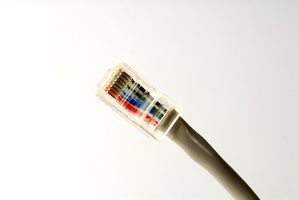Howtojetro.blogspot.com | How to Boost Your Metabolism Easily - When it comes to weight loss, a fast metabolism makes the difference between reaching your goals and spinning your wheels without seeing much progess. Not only does a speedy metabolism help you burn more calories, but it allows you to eat more during your weight loss journey, making you more likely to stick with your new lifestyle for long-term results. Luckily, you can maximize your metabolic rate through exercise, diet and lifestyle choices.
Lift Weights
Contrary to popular belief, the way to get a faster metabolism is not through hours of cardio. Weight lifting is the best thing you can do if you want a faster metabolism, because it helps you build and maintain lean muscle. "Someone with more lean muscle mass has a higher resting metabolic rate because it takes more calories to maintain muscle than it does fat," says Jarrett Arthur, a fitness and self-defense expert.
Working out with moderate to heavy weights also helps you burn more calories in the hours after your workout. This phenomenon, called EPOC (excess post-exercise oxygen consumption) makes your body take in more oxygen, firing up your metabolism for hours after you've left the gym.
Schedule muscle-building sessions into your gym routine 2 to 3 times per week, with at least one day in between each session for recovery.
HIIT: High Intensity Interval Training
Transform boring cardio into a metabolism-boosting workout with HIIT, or high intensity interval training. Like weightlifting, HIIT stimulates EPOC, so you’ll burn more calories all day, not just when you’re working out.
If you already do cardio on a regular basis, start adding sprints to the mix. Work at maximal effort for 15 seconds to 1 minute, then slow down to recover between sprints. Here's a quick 5-minute HIIT workout to get you started.
- 45 seconds burpees
- 15 seconds rest
- 60 seconds jump rope
- 15 seconds rest
- 45 seconds jump squats
- 15 seconds rest
- 60 seconds ice-skaters
- 2 minutes rest
- Repeat three times.
If you’re new to aerobic exercise, ease into interval workouts. Try moderately raising your intensity for three brief intervals during your workout, but don't go all out, suggests Arthur. As you get fitter, you can start adding more intervals and work at a higher intensity during your sprints, then start reducing the amount of time between intervals.
Spice It Up
Add a little fire to your food to get your metabolism revving, says Charmaine Jones, a registered dietitian based in Washington, D.C. Spicy meals, like ones containing cayenne or ginger, increase your body temperature, which speeds up your metabolism. You can add a pinch of cayenne to almost any savory meal, and even include fresh cayenne and ginger in your smoothies.
For a metabolism-boosting pre-workout, make this energizing pineapple ginger smoothie:
Combine 2-3 pineapple chunks, 1-2 small slices of fresh ginger, a pinch of cayenne pepper, a squeeze of lemon, and ½ cup coconut water or filtered water. Combine all ingredients into your blender and blend until smooth. If you want a chillier treat, use frozen pineapple instead of fresh.
Pump (Dietary) Iron
Raise your metabolism with meals and snacks high in iron, says Jones. Iron helps transport oxygen to your cells, supports your cellular metabolism, gives you natural energy, and helps with chemical reactions needed to burn fat.
Foods rich in iron also tend to contain protein, which raises your metabolism. Protein has a high thermic effect, so your body burns more calories while digesting protein than it does digesting carbs and fat. Foods high in protein also tend to be filling, so they can help you stick to a calorie-controlled diet.
Add lean meats and beans to your meals to increase your iron intake, recommends Jones. Here are a few ideas on how to add more protein to your diet:
- Add a handful of chopped chicken breast or grilled tempeh to your salads
- Pair celery and carrot sticks with black bean hummus
- Drink a protein shake as a meal-replacer or post-workout snack
- Swap out regular yogurt for Greek
- If you're craving fruit, pair it with 1/2 cup of cottage cheese
- Swap refined carbs for lentils or quinoa
- Add protein powder to your oatmeal
Use Metabolism-Stimulating Supplements
Certain vitamins and herbals supplements can also speed up your metabolism. The B-complex vitamins help you get the most energy from your food, providing a boost that powers your workouts and revs up your metabolism, says Jones. Green tea extract, or GTE, contains caffeine, a natural metabolism booster. GTE acts as a thermogenic, raising your body temperature to increase your calorie burn throughout the day.
Make sure you check with your doctor before taking any supplement, cautions Jones. Your doc can recommend an effective, quality-controlled supplement and recommend a dosage that’s not likely to cause side effects.
Drink Icy H2O
Staying hydrated is key to boosting your metabolism, says Erin Palinski-Wade, a New Jersey-based registered dietitian and personal trainer. Water helps flush away energy-sapping toxins that would otherwise make you feel drained and tired. Getting enough water is especially important as you lose weight, because your body generates more toxins when it burns fat.
Down at least 64 ounces daily, and choose cold water for a further metabolism boost, you’ll burn a few extra calories warming it up to body temperature.
Get Your Z's
Revving your metabolism involves more than healthy diet and exercise, you also need enough rest each day. Your body regenerates lean muscle while you’re asleep, says Palinski-Wade, so quality shut-eye boosts your metabolism by helping you build muscle tissue. Getting enough sleep also helps reduce stress and regulates your hormone levels, preventing a buildup of stress hormone cortisol, which is linked to weight gain.
Having trouble getting your recommended 7 to 8 hours nightly? Try all-natural relaxing remedies to get the shut-eye you need.



















